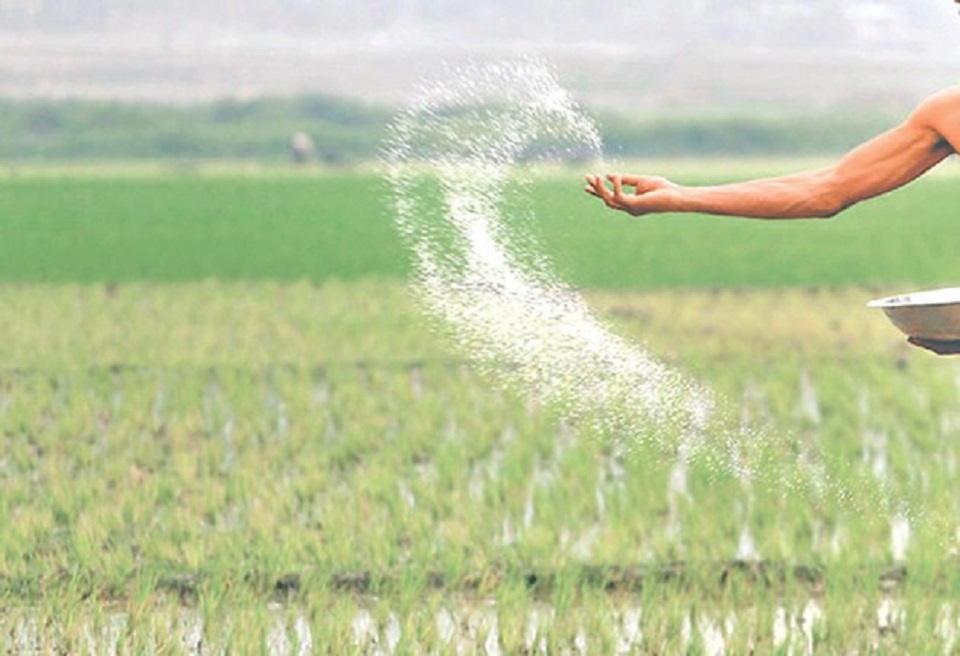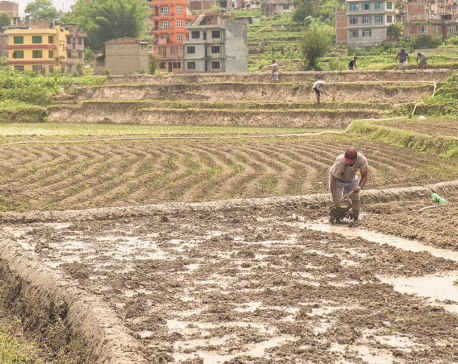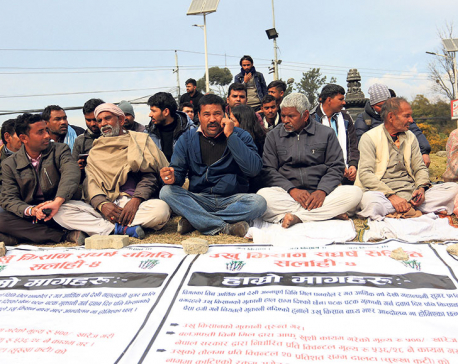
OR
What’s the cause behind fertilizer shortage? What can be done?
Published On: December 10, 2020 08:30 AM NPT By: Bhairab Raj Kaini

Nepal needs to explore both short-term and long-term solutions to mitigate fertilizer shortage that has hindered the country’s agriculture productions for years.
Fertilizer supply in Nepal remains critically below the total demand every year but the supply is more acute this year than previous years. Nepal does not produce fertilizers and the demand is being met through formal and informal imports. Effective demand of chemical fertilizer at present is estimated to be 700,000 MT which is projected to increase to 1,500,000 MT by 2022. About one-third of the total demand is imported through formal source. In other words, the informal import of fertilizers is estimated to be about two times higher than the formal import. However, planned import for the current financial year is approximately 0.45 million MT, with urea being the highest component.
Importation and distribution of fertilizers began with the establishment of the Agriculture Inputs Corporation (AIC) under the Ministry of Agriculture (MOA) in 1966. Since then AIC, as a public sector enterprise, has been responsible for procurement and distribution of chemical fertilizers in the country. Though the government mandated Salt Trading Corporation Limited (STCL) as well to import and distribute subsidized chemical fertilizers from 2015, its volume of import is too small. So the main responsible agency for importing fertilizer in the country is AICL and it should be so in the days to come.
The main crops of Nepal using bulk amounts of fertilizer are rice, maize, wheat and vegetables. We know very well when these crops need fertilizers. Let us take the example of paddy which contributes to almost 20 percent to AGDP, seven percent of the national GDP and more than 50 percent in the total calories requirement of the Nepali people. Nepal produces 4.8 million tons of paddy rice per year.
Paddy is planted during June-July. Rice plants require nitrogen, phosphorus, and potassium in large amounts with some trace amounts of zinc. But the majority of farmers in the country uses traditional cultivation practices and only opts for urea, which is a source of nitrogen for the soil. During a single paddy season, the urea requirement is about 120,000 tons whereas that of DAP is 50,000 tons.
Why the shortage?
Nepal usually imports its fertilizers from India, China, Turkey, Egypt, and other Gulf countries via Indian ports—mainly Kolkata port. It takes about six months to complete all procedural requirements and fertilizers to reach at the Nepal’s border points. Several challenges remain even once the fertilizers reach Nepal’s border points.
So the bidding process should have started from the month of Nov/Dec but AICL started it on March 24 after the lockdown was announced. The tender submission process had since been delayed for over two months as administrative activities were slowed down. Furthermore two companies selected for import lacked experience and hence they could not deliver fertilizers. As per the agreement, these companies were supposed to have supplied the first consignment within 42 days from the date of the issuance of the letter of credit while the second shipment was to be delivered within 72 days. Both these companies had signed agreements to import 25,000 tons of urea.
The outbreak of COVID-19 and the subsequent lockdown also created a precarious situation for Nepal as its fertilizers remained stuck at Indian ports for a long time. While AICL and STCL had placed requests with the Indian government for the transit of fertilizers from the ports, it could not be effective. Here the government should have played facilitative roles to talk with New Delhi for ensuring allocation of labor to cargo handling and transport systems at the ports on an urgent basis. But it did not happen. Furthermore, the change in senior management of the AICL and the recently issued directives to import and distribute fertilizers also delayed the procurement process. Inefficiencies have been noticed in the working style of AICL and Ministry of Agriculture and Livestock Development (MOALD). Furthermore, the restriction of farmers’ movement due to lockdown discouraged informal imports.
As a short-term solution, the government made a deal with Bangladesh for about 50,000 tons of fertilizers to be supplied on a refundable basis, but its implementation is also facing the same problem. The supply has been delayed by few more months and hence, this fertilizer could also not be made available for paddy. As the government bodies are yet to ink an agreement with the company contracted for transporting the fertilizers to Nepal, this fertilizer may not be available even for the wheat crop. Though the government in the current fiscal year had allocated Rs 11 billion for fertilizer purchase compared to Rs 8.99 billion of the previous year, farmers have yet to benefit from this expenditure.
Correcting the shortcomings
Nepal needs to explore both short-term and long-term solutions. The first hurdle is the delayed movement of fertilizers from Indian ports. This can be expedited through government-to-government negotiations. The import takes about six months to reach the country through the tender process. In this context, ‘buffer stocks’ can be a sustainable solution. This would not only help the country buy at a lower price but also in managing the dire situation in the case of the shortage.
Fertilizer Policy (2002) has a provision of about 20 percent of the estimated annual fertilizer consumption to be held as buffer stock. But it has never been implemented. The process of inviting bids for tenders should be started from the beginning of the second quarter of each fiscal year. Companies or contractors should be selected considering their experiences and track records.
Priority should be given to timely supply of required fertilizer than to providing subsidy only. AICL should be strengthened in terms of human resource development considering the international trade related issues. The government does not provide fertilizers to farmers directly. It distributes through cooperatives. So they should also be strengthened. The role of private sector in supplying fertilizer should be acknowledged and private sector actors should be encouraged through legal as well as financial supports. Internal distribution system needs to be improved.
Nepal needs to explore options to reduce dependence on single country routes to access international markets and look forward to other routes as well.
Government-to-government purchasing, join-venture investment with fertilizer producing companies and production of fertilizers inside the country itself can be some of the long-term solutions to perennial fertilizer shortage that Nepal has been struggling with for years.
You May Like This

What is lacking in Nepal’s land reform initiative?
Although land reform has been a priority area of the government, land use planning has always remained under the shadow... Read More...

Annapurna Sugar Mill pays Rs 5 million dues to farmers, vows to clear all by second week of February
KATHMANDU, Jan 3: The owner of Annapurna Sugar Mill Rakesh Agrawal has informed the Ministry of Industry, Commerce and Supplies... Read More...

Minister Bhushal vows to bring agricultural policies as per changing context
KATHMANDU, Nov 25: Newly-appointed Minister for Agriculture and Livestock Development Ghana Shyam Bhushal has committed to formulate agricultural policies in... Read More...









Just In
- Heavy rainfall likely in Bagmati and Sudurpaschim provinces
- Bangladesh protest leaders taken from hospital by police
- Challenges Confronting the New Coalition
- NRB introduces cautiously flexible measures to address ongoing slowdown in various economic sectors
- Forced Covid-19 cremations: is it too late for redemption?
- NRB to provide collateral-free loans to foreign employment seekers
- NEB to publish Grade 12 results next week
- Body handover begins; Relatives remain dissatisfied with insurance, compensation amount









Leave A Comment